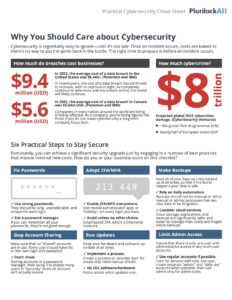In today’s interconnected digital landscape, cybersecurity has become a paramount concern for individuals, businesses, and organizations. One of the most prevalent and concerning threats in this realm is credential stuffing. This malicious technique, often overlooked due to its seeming simplicity, poses a significant risk to online security. This deep dive will explore what credential stuffing is, why it matters, and delve into its importance through in-depth analysis.
Understanding Credential Stuffing
Credential stuffing refers to a cyberattack method in which attackers use previously stolen usernames and passwords to gain unauthorized access to accounts on various online platforms. The concept behind this technique is straightforward: attackers exploit the widespread habit of reusing passwords across multiple accounts. When a data breach occurs and login credentials are compromised, cybercriminals capitalize on the fact that a significant percentage of users tend to reuse their passwords across different websites and services.
The process of credential stuffing typically involves using automated tools that systematically input stolen username and password pairs into various websites and applications. These tools capitalize on the vulnerabilities of platforms that lack sufficient protection against such attacks, allowing attackers to gain unauthorized access to user accounts.
The Significance of Credential Stuffing
1. Massive Scale Attacks
One of the key reasons why credential stuffing matters in cybersecurity is its potential for massive-scale attacks. Since attackers use automation to rapidly test thousands or even millions of username and password combinations across different platforms, the impact of a successful attack can be widespread and devastating. Not only does this compromise the security and privacy of individual users, but it also places an immense burden on the targeted online services.
2. Reusing Weak Passwords
Credential stuffing thrives on the dangerous practice of password reuse. Many users, overwhelmed by the sheer number of accounts they manage, resort to using the same password for multiple platforms. This significantly amplifies the risk presented by credential stuffing attacks. A breach in one seemingly insignificant platform can potentially lead to the compromise of more critical accounts, such as email, banking, and social media profiles.
3. Monetary Loss and Data Breaches
The aftermath of successful credential stuffing attacks can range from financial losses to large-scale data breaches. Attackers can exploit compromised accounts for financial gain by making unauthorized transactions, purchasing goods, or accessing sensitive financial information. Moreover, the information obtained from these attacks can be leveraged in secondary attacks, such as phishing campaigns or identity theft, causing further harm to individuals and organizations.
4. Reputation Damage
For businesses and organizations, falling victim to credential stuffing can have severe repercussions on their reputation. Customers lose trust in platforms that fail to secure their personal information adequately. The aftermath of a data breach resulting from credential stuffing can lead to customer attrition, legal actions, and long-term damage to brand reputation.
In-Depth Analysis of Importance
1. Human Behavior and Cognitive Biases
The importance of understanding credential stuffing lies in its deep connection with human behavior and cognitive biases. People tend to favor convenience over security, and this inclination is often manipulated by cybercriminals. The habit of reusing passwords across multiple accounts is driven by the cognitive bias known as the availability heuristic. This bias leads individuals to rely on readily available information, such as familiar passwords, rather than investing effort in creating and remembering unique passwords for each account.
Additionally, the normalcy bias plays a role in downplaying the perceived risk of credential stuffing. Users might acknowledge the prevalence of data breaches but believe that their accounts are immune to such attacks. This bias can be exploited by attackers who capitalize on the optimism bias, leading individuals to underestimate their personal vulnerability.
2. Economics of Cybercrime
To comprehend the significance of credential stuffing, one must delve into the economics of cybercrime. This technique offers attackers a cost-effective method to capitalize on the data obtained from previous breaches. Rather than developing intricate attack vectors, cybercriminals can utilize readily available tools or purchase them from underground markets. This lowers the barrier to entry for aspiring attackers and contributes to the persistence of credential stuffing as a threat.
Furthermore, the economics extend to the potential gains from successful attacks. Monetizing compromised accounts through various means, such as selling them on the dark web, using them for fraudulent activities, or demanding ransoms, generates a self-sustaining cycle that fuels the expansion of credential stuffing attacks.
3. Implications for Cybersecurity Strategies
Credential stuffing underscores the need for robust and multi-faceted cybersecurity strategies. Traditional security measures such as firewalls and intrusion detection systems often fall short in countering these attacks due to their automated and distributed nature. Instead, adaptive approaches that combine preventive, detective, and corrective measures are essential.
Multi-factor authentication (MFA) emerges as a pivotal defense against credential stuffing. By requiring users to provide an additional form of verification beyond their password, MFA introduces a layer of complexity that disrupts the automated nature of these attacks. However, even MFA is not foolproof, as attackers continue to evolve their tactics to overcome this obstacle.
4. Privacy Considerations and User Education
The importance of addressing credential stuffing extends to the realm of user privacy and education. Individuals often underestimate the value of their personal data, and the implications of data breaches resulting from credential stuffing can be profound. It’s crucial to educate users about the potential consequences of reusing passwords and the importance of practicing good password hygiene.
Additionally, as platforms collect and store vast amounts of user data, privacy considerations become paramount. The compromised data from credential stuffing attacks can lead to the exposure of sensitive personal information, which can then be exploited in various ways. Strengthening privacy practices, including data minimization and encryption, becomes essential in mitigating the risks associated with credential stuffing.
Conclusion
Credential stuffing serves as a stark reminder that cybersecurity is a multidimensional challenge influenced by human behavior, economics, and evolving cyber threats. The seemingly simple technique exploits the tendencies of password reuse, leading to far-reaching consequences for individuals and organizations alike. Its significance lies in its potential for massive-scale attacks, the exploitation of human cognitive biases, and the economic incentives that sustain its prevalence.
Understanding the importance of credential stuffing goes beyond acknowledging its technical aspects. It requires a comprehensive view of the psychology behind password reuse, the economics driving cybercrime, the implications for cybersecurity strategies, and the imperative of user education and privacy considerations. As the digital landscape continues to evolve, combatting credential stuffing demands a collaborative effort from technology providers, businesses, governments, and individual users to create a safer online environment.













